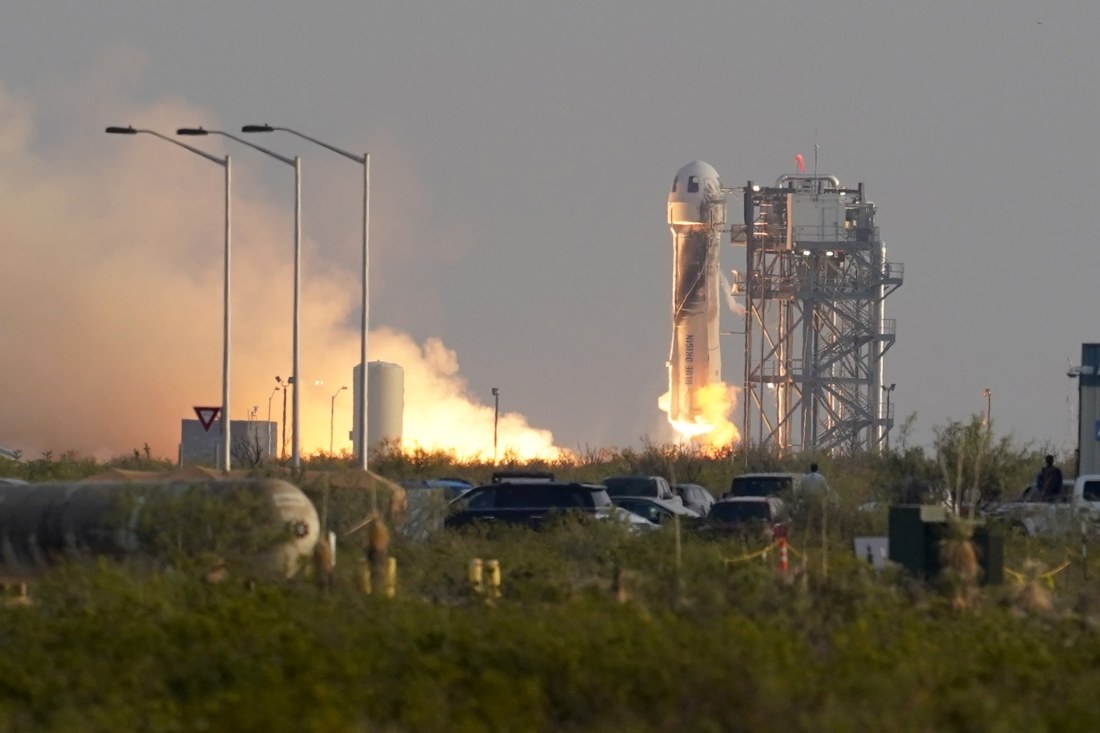America’s new moon race is billionaire v billionaire

- by Admin
- May 7, 2024

The mission to put people back on the moon started in 2017 with a NASA program that would become known as Artemis. NASA initially gave a single $US2.9 billion contract for a lunar lander to SpaceX, in part because the agency had only enough money for one, which prompted a lawsuit from Blue Origin.
A SpaceX Starship during a test in March. AP
After some lobbying in Congress, the agency received enough funding for a second contract worth $US3.4 billion, which went to Blue Origin. The money is for development; the companies get to keep what they build. “We’re buying the service,” says Kent Chojnacki, deputy manager of NASA’s human landing system program. “So we never take ownership of the hardware.”
Musk’s long-term goal for SpaceX is Mars, which is evident from the fuel source used by Starship. Whereas Blue Origin’s lunar lander uses hydrogen, which could theoretically be mined from moon water someday, Starship uses methane, a molecule that could be synthesised on Mars, where Musk has said he’d like to end his life (though not on impact).
Still, Musk acknowledged the merits of going to the moon as NASA was laying the groundwork for its mission. “If you want to get the public fired up, you’ve got to put a base on the moon,” he said in 2017.
Each company’s task is to create a spacecraft that can park itself in orbit around the moon and await the arrival of NASA astronauts from a second craft or a space station nearby. The astronauts would transfer to the company’s vehicle, which would then carry the crew down to the moon’s surface. After a while, they’d load back into the lander and into lunar orbit.
For Musk, the contract presented an excuse to accelerate work on his future Mars shuttle called Starship. It’s the largest, most powerful rocket system ever developed, with a top portion serving as a lunar vessel that can land upright and take off again. SpaceX’s plan is to conduct an uncrewed test landing on the moon as early as next year and then a first human landing in 2026, though Musk and NASA habitually miss deadlines.
A major complicating factor is an unproven refuelling system that requires launching multiple Starships. Escaping Earth’s gravity requires a lot of energy, and the fuel cost increases for heavier objects. A rocket the size of Starship can’t make it to the moon and back on a single tank filled up on Earth.
SpaceX’s system calls for the launch of one Starship into Earth’s orbit, where it will park and serve as a fuelling depot. Then SpaceX will launch about 10 additional Starships filled with methane and oxygen that will dock with the depot to refill its reserves. Once the depot is fully topped off, yet another Starship will launch from Earth, dock with the depot, refuel and then head to the moon.
Blue Origin mocked this plan a few years ago with an infographic arguing that the multi-rocket refuelling architecture was too complicated to be reliable. Blue Origin has since quietly changed course and adopted a system similar to SpaceX’s for its moon missions, says Chojnacki. “They’ve come to similar architecture decisions on the number of launches and fills that they need,” he says.

Blue Origin’s New Shepard rocket takes off from Van Horn, Texas in 2021. AP
Blue Origin’s technique will require anywhere from four to eight rocket mules to refuel a spacecraft in low-Earth orbit, says Lisa Watson-Morgan, manager of NASA’s human landing system program. Blue Origin calls its refuelling station a “space tug” because after topping off the lander orbiting Earth, the tug will follow the lander into the moon’s orbit, ready to refuel it for its trip to the lunar surface. The tug can then travel back and forth between each orbit to retrieve more hydrogen fuel.
As early as next year, Blue Origin plans to send to the moon a cargo version of its lander that doesn’t require a tug. If this succeeds, Bezos’ company could conceivably beat Musk’s, though Blue Origin maintains a less ambitious timeline to send people there by 2029.
Schedules are unpredictable in aerospace, though. Blue Origin’s lunar lander is designed to launch on top of its New Glenn rocket, which was supposed to first lift off in 2020 but has yet to do so. New Glenn is currently due to launch in September if all goes well. “Blue Origin needs to be much faster,” Bezos said on the Lex Fridman podcast in December, “and it’s one of the reasons that I left my role as the CEO of Amazon a couple of years ago.”
Musk, meanwhile, remains CEO of a bunch of companies, including SpaceX, which continues to lead the aerospace industry. During its most recent Starship test flight in March, SpaceX transferred propellants from one tank to another, a small but meaningful step. A NASA advisory committee said on April 26 that while SpaceX was still analysing the results, the experiment “was successful by all accounts”.
The Latest News
-
December 22, 2024Footy world rallies around Lions premiership winner and family amid awful news
-
December 22, 2024JPMorgan exits Australia’s Star Entertainment
-
December 22, 2024Fearless teen debutant touches down for Boxing Day
-
December 22, 2024Live: Both Australian openers dropped as NZ miss big chances
-
December 22, 2024New Zealand v Australia: third women’s one-day international – live



